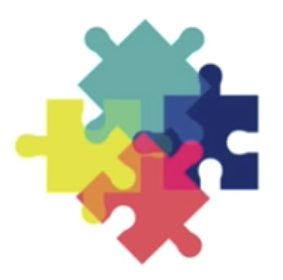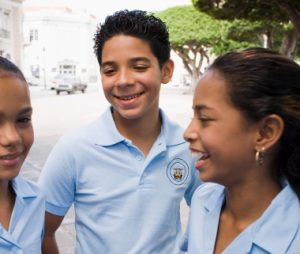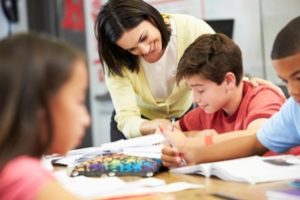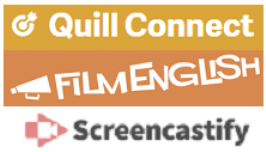NJ Teachers of English to Speakers of Other Languages/
NJ Bilingual Educators
ARTICLES
Adult Ed: Andrea S. Fonteñez- Educational Equity for English Language Learners
Bilingual Elementary 1-8: Jack Meyers- Digital Tools for Teachers of Emergent Bilinguals
Bilingual/ESL Middle School: Anel V. de Suriel- Call Me by My Name: Labels, Language and Equity
Early Childhood: Jessica Perdomo-O’Hara- Using Student-Centered Charts as a Reflection Tool to Drive Instruction
ESL Elementary: Angela Pape- Language Enriched Content Instruction
ESL Secondary: Hana Prashker (with Gina Finneran)- Free Resources
Higher Education: Patricia George- Asset-Based Pedagogy
Parent and Community Action: Gabriela Colon- Tapping into Families and Communities to Support Social Emotional Learning
Special Education: Solange A. Lopes Murphy- What Services Should Emergent Bilinguals with Disabilities Receive? A Call for Reflection
Supervisors: Laura Arredondo- Youth Participatory Action Research: Quality Inquiry Learning Experiences for ELLs
Teacher Education: Lisa Rose Johnson- Grow Your Own Teacher Education Programs and the Role of the Seal of Biliteracy
Adult Education Special Interest Group (SIG) Representative
Educational Equity for English Language Learners
By Andrea S. Fonteñez, Ed.D.
 Educational equity for English language learners promotes an asset-based view rather than diagnosing them with “el pobrecito syndrome,” i.e., being viewed with a deficit mindset, “Oh, you poor thing- unwashed, of an in poverty, non-English speaking immigrant; we sympathize with your circumstances and lower our expectations for what you might be able to learn” (Garcia, 2002). A deficit mindset can be detrimental to the education of English Language Learners as they do not promote equal educational opportunities.
Educational equity for English language learners promotes an asset-based view rather than diagnosing them with “el pobrecito syndrome,” i.e., being viewed with a deficit mindset, “Oh, you poor thing- unwashed, of an in poverty, non-English speaking immigrant; we sympathize with your circumstances and lower our expectations for what you might be able to learn” (Garcia, 2002). A deficit mindset can be detrimental to the education of English Language Learners as they do not promote equal educational opportunities.
On the other hand, in a culturally responsive classroom, teachers accept their English Language Learners and view what they bring into the classroom -their background knowledge and language- as resources that can be tapped into. Students’ cultures and prior experiences are honored and respected, and teachers take the time to get to know their students rather than just making rushed assumptions and diagnosing their students as low-achieving or lacking in ability. “A culturally responsive educator believes that every aspect of the individual has value and worth, and refuses to categorize or label students” (Reyes, Scribner, Paredes, Scribner, 1999).
As Garcia (2002) states, “Educational programs, teachers, and administrators who serve these students well, respect them for what they bring: their language, culture, and worldview. They do not see disadvantages that only place students at risk but instead see in these students resources that can be marshaled to meet learning goals, particularly high learning goals. There is a culture of acceptance and respect that is to be honored and extended to all students and the families and communities from which they come.”
Culturally responsive teachers take the time to get to know their students as learners. This goes beyond forming just a superficial acquaintance or finding out what students’ favorite color is, just to give an example. It is about creating a caring culture of inclusion, where every student is accepted and valued. Students are given a voice in deciding what and how they should learn; they begin to expect more of themselves and one another. When teachers know their students as learners, they are able to give each of their students the support and scaffolding they need to be academically successful.
In addition, culturally responsive teachers make use of two-way instructional conversations” (accountable talk practices) with students that encourage dialogue as the teacher strives to help the student achieve or perform beyond his or her current capacity. “Thus, through conversation, learn new skills and concepts and how to form express, and exchange ideas in speech and writing” (Reyes et al. 1999).
Finally, in a culturally responsive classroom, teachers not only recognize that their students’ language, cultural backgrounds, and prior knowledge are assets that English language learners bring with them, but also they tap into these assets to ensure that their students receive equitable educational opportunities to help them achieve academic success.
References
DeWitt, P. (2016). “Why Do We Have a Deficit Mindset With ELL/ENL Students?” Education Week. Retrieved on 12/16/19 from https://blogs.edweek.org/edweek/finding_common_ground/2016/02/why_do_we_have_a_deficit_mindset_with_ellenl_students.html
Garcia, E. (2002). Student Cultural Diversity. Understanding and Meeting the Challenge. Third Edition. Houghton Mifflin Company.
Reyes, P., Scribner, J. D., A., & Scribner, A. P. (1999). Lessons from High-Performing Hispanic Schools. Creating Learning Communities. Teachers College Press.
Tung, R. (n.d.). “Innovations in Educational Equity for English Language Learners” Retrieved on 12/16/19 from https://files.eric.ed.gov/fulltext/EJ1046319.pdf
Andrea S. Fonteñez, Ed.D. is the Adult Education Special Interest Group (SIG) Representative and the Director of Bilingual/ESL Education in the New Brunswick Public Schools. She can be contacted at afontenez@njtesol-njbe.org
Bilingual Elementary Special Interest Group
Digital Tools for Teachers of Emergent Bilinguals
By Jack Meyers
 It’s getting to be that time of year again where we could all use a little extra fuel in our tanks, instructionally speaking, of course. For that reason, as a mid-year tune-up, I’d like to present an overview of my favorite engaging and scaffolded digital language-learning tools that can be useful to educators of emergent bilinguals at all levels of language ability. Especially for students who are emerging in their language skills, it is of utmost importance to keep instruction varied and exciting, with multiple entry points and differentiated modes of production. I have split the tools into a menu of options, starting with an assessment appetizer, then exploring some digital storytelling, and ending with extracurricular adventures.
It’s getting to be that time of year again where we could all use a little extra fuel in our tanks, instructionally speaking, of course. For that reason, as a mid-year tune-up, I’d like to present an overview of my favorite engaging and scaffolded digital language-learning tools that can be useful to educators of emergent bilinguals at all levels of language ability. Especially for students who are emerging in their language skills, it is of utmost importance to keep instruction varied and exciting, with multiple entry points and differentiated modes of production. I have split the tools into a menu of options, starting with an assessment appetizer, then exploring some digital storytelling, and ending with extracurricular adventures.
Amplify Assessment
Valid and authentic assessments are a key component of the language learning classroom. To be clear, language learning and proper assessment of said learning should be a focus in all classrooms. Moreover, for emergent bilinguals, the close attention to detailed assessment is invaluable.
- Edpuzzle – This is a tool that educators can use to make assessments within a video. Students can be prompted to answer questions and complete language tasks while watching a video. This website is easy and seamless to use.
- Bubbl.us – Educators can use this tool to teach students how to demonstrate their learning through mind-mapping, which is essentially digital graphic organizing. Students can develop flexibility related to their language production.
- Zappar – This one is an augmented reality app that I am very enthusiastic about. Educators may use this app to guide students through making text or pictures “come to life” with images, videos, and additional text for extensions.
Elevate Storytelling
Emergent bilinguals benefit from visuals and diverse representations of literature and storytelling. Therefore, the following tools will help educators teach students to elevate their storytelling abilities.
- Fake Text Messages – This is perhaps the most accessible tool on the menu for students of all ability levels. The site simulates a text message conversation, which can allow emerging writers to access dialogue in writing.
- Motion Comics – This is a super fun tool for kids to explore storytelling in the medium of comics, which can allow emergent bilinguals to elevate their writing without losing the opportunity to focus on craft and organization.
Think Outside the Box
Often at this point of the year, educators and students alike might begin to feel some cabin fever. To assuage this restlessness, it would be in the best interest of the entire classroom to get a fresh perspective on the world. That is why these next few tools help you think and see outside of the box (and outside of the classroom).
- Google Earth – This website is a great place to start for students craving a little global travel. You can use this to teach whole group lessons or as an extension to lessons about geography, maps, or even as an additional text feature in informational reading units.
- Google Expeditions – The next level for global exploring is the Google Expeditions app, which you can use a smartphone hooked up to a projector or an iPad to utilize. This allows educators to guide students through in-depth virtual tours of interesting cultural sites. It is indispensable when engaging emergent bilinguals in acquiring new content and site-specific knowledge to add to their linguistic repertoire.
Jack Meyers is the Bilingual Elementary SIG Representative and a 3rd Grade Bilingual Teacher in Franklin Twp. (Somerset County).
Bilingual ESL Middle School Special Interest Group
Call Me by My Name: Labels, Language and Equity
By Anel V. Suriel
 This fall, WIDA (2019) released drafts of their 2020 revised standards and an updated Guiding Principles document. One of the most pronounced differences in this document is the move away from the term English language learner (ELL) or English learner (EL) to Multilingual Learner.
This fall, WIDA (2019) released drafts of their 2020 revised standards and an updated Guiding Principles document. One of the most pronounced differences in this document is the move away from the term English language learner (ELL) or English learner (EL) to Multilingual Learner.
WIDA (2019) defines a “Multilingual Learner” as “…all children and youth who are, or have been, consistently exposed to multiple languages. It includes students known as English language learners (ELLs) or dual language learners; heritage language learners; and students who speak varieties of English or indigenous languages.”
Within the WIDA definition, the Multilingual learner is classified by their wide range of language learning in academic settings. As of yet, this definition does not acknowledge the wide varieties of linguistic practices, within their home or target languages, students bring from their home and community environments. Nonetheless, it does recognize the treasure trove of linguistic competences students acquire aside from academic English.
It is the first time I see a label that sees me, a bilingual speaker, for more than my perceived uses of English. It is a label that acknowledges my entire linguistic repertoire and acknowledges my language uses and language identity as a dynamic and interchangeable whole (García, 2019).
Multilingual learner (WIDA, 2019) views diverse language practices from a lens of promise or strength (Mahoney, 2019). The term was founded on sound academic research related to the development of multilingual learners over a forty-year time span, and the ten Guiding Principles (2019) acknowledge that linguistically and culturally diverse students hold linguistic and cultural capital that are naturally leveraged for learning. The Principles also declare that we, Multilingual learners, learn best when the curriculum and learning environment are meaningful, culturally responsive, and sustaining. Connecting learning to our real-world needs and practices allows us to succeed both in and out of school settings; when we can draw from all of our language modalities and practices. We leverage this learning to affirm our identities, develop and understand multiple perspectives, and enrich our understandings and competencies of language use.
The term Multilingual learner and the Guiding Principles (2019) effectively dismantle raciolinguistic ideologies of language learning the posit English as the end-all-be-all implicit in the labels used to define us in our state and federal educational policy, English language learner and Limited English Proficient, respectively (Flores & Rosa, 2015; see also Flores & Rosa in Paris & Alim, 2017). Presenting language competencies as an asset and without hierarchical standing, we, Multilingual learners, re-center all of our language skills as well as diverse linguistic competencies as the starting point and goal of language education.
As language educators in all academic settings, where identity plays an essential role in the development of the children we serve, we must remember and use this new term to promote equity for ourselves and our students. Language is intrinsically tied to identity. The othering of our language skills effectively results in the othering ourselves—and validates the practice of inequality from those who aim to leverage linguistic power. As visible and vocal representatives of our programs and children, educators must advocate for the appropriate use of terms within and by our schools as well as our state and federal policies. Multilingual Learners are more than our English skills.
The change starts with us. WIDA (2019) has taken a step in the right direction. We must follow in line, continuing to demand a change in name that acknowledges all that we are and all that we possess on all levels for the benefit and equitable treatment of us all—the language educator and the language student.
References
Flores, N.& Rosa, J., (2017). “Do you hear what I hear?” In D. Paris & H.S. Alim, Culturally sustaining pedagogies: Teaching and learning for justice in a changing world (175-190). New York, NY: Teachers College Press.
Flores, N. & Rosa, J. (2015). Undoing appropriateness: Raciolinguistic ideologies and language
diversity in education. (Report). Harvard Educational Review. 2015;85(2):149-171.
García, O. (2017). Translanguaging in schools: Subiendo y bajando, bajando y subiendo as
afterword. Journal of Language, Identity & Education, 16(4), 256–263. https://doi.org/10.1080/15348458.2017.1329657
Mahoney, K. (2017). The assessment of Emergent bilinguals: Supporting English language learners. NY: Multilingual Matters.
WIDA (2019). “WIDA guiding principles of language development.” Retrieved on December 16, 2019 from
https://wida.wisc.edu/sites/default/files/Website/Misc%20Pages/2020StandardsVision/2020-vision-guiding-principles-flyer.pdf?fbclid=IwAR3ydpBuTriNwVsBWPON0aR8eV5eMuJLS3364tO9F8yriXiR4yXKBGGx7vs
Anel V. Suriel is the NJTESOL/ NJBE Bilingual ESL Middle School 6-8 SIG Representative. She is the Bilingual Literacy Instructor for grades 6-8 at Franklin Township School District and a Doctoral Teaching Assistant at the Rutgers Graduate School of Education.
Bilingual/ESL Early Childhood Special Interest Group
Using Student-Centered Charts as a Reflection Tool to Drive Instruction
Jessica Perdomo-O’Hara
 Using visual aids is one of the main strategies ESL and Bilingual educators use for differentiation and accessibility to content in general education settings. Charts are one of those tools that we use constantly to present information. But today I would like you to think beyond the regular use that you give charts. Usually, educators use it to record some sort of information, and even though most of the time they are a teacher driven activity, charts can become student-centered, and when they do, they can provide teachers with meaningful information that can drive instruction over time.
Using visual aids is one of the main strategies ESL and Bilingual educators use for differentiation and accessibility to content in general education settings. Charts are one of those tools that we use constantly to present information. But today I would like you to think beyond the regular use that you give charts. Usually, educators use it to record some sort of information, and even though most of the time they are a teacher driven activity, charts can become student-centered, and when they do, they can provide teachers with meaningful information that can drive instruction over time.
Simple Ways to Make a Chart Student-Centered
• Ask Students to illustrate the idea you recorded on the chart.
• Add student names next to their idea.
• If students are older, they can write their own sentences and post them on the chart.
• Read their ideas back to them, and have them compare them with a classmate.
• Have them talk to a partner and come up with an idea together, and write both names right next to them.
In my experience, all the ideas above have given students ownership and as a result, they refer to the chart more often and independently.
Ways to Use Charts to Drive Instruction
- Use it to find out how much background knowledge your students have on the subject. Maybe you do not need to teach that lesson that you taught last year because the current students have more background knowledge on the subject than in past years.
- Use it to assess how much they have learned. I mean, go back to charts that you have done in the past and see what else your students can add about the subject. You might get a pleasant surprise.
- Use the charts to find out what they want to learn about the subject. Brainstorming ideas can bring other thoughts and questions about the subject that you had not planned, and can make what you teach more relevant.
- Use it to identify areas of growth. Do they use the same words over and over to describe -Is vocabulary an area of growth-? Do they have difficulty inferencing?
- Use it as a product/evidence that shows what they have learned. Compare it to an initial one. How much has that student/ group learned about the subject?
- Use it as a reference tool to determine if students have made progress on their knowledge.
Overall, charts can have many purposes that can aid in determining, modifying, and differentiating content and language goals. Making charts student-centered can make a big difference in your instruction, and administrators will love seeing students’ work on display.
Jessica Perdomo-O’Hara is the NJTESOL/NJBE Bilingual/ESL Early Childhood Representative and a Prek ESL Teacher in the North Plainfield Public Schools.
Elementary ESL Special Interest Group
Language Enriched Content Instruction
By Angela Pape

With various approaches to English as a Second (ESL) instruction currently in practice, districts face the difficult decision of adopting a curricular model that will best serve English Language Learners (ELLs). One approach involving the integration of language and content continues to gain increasing popularity across the state. Such instruction targets English language development through the study of standards-based content. In other words, it addresses the language needs of ELLs while still providing an enriching learning experience aligned to Science and Social Studies content standards.
Zwiers & Crawford (2011) write, “Students must have academic knowledge available in their minds for thinking and conversation purposes. That is, students need things to think and talk about!” (Zwiers & Crawford, 2011, p. 9). Using the Next Generation Science Standards (NGSS) and New Jersey Student Learning Standards for Social Studies (NJSLS) to create content-specific units of study, this approach provides ELLs with authentic learning opportunities through which they can practice language usage. According to Gibbons (2002), “The integration of language and content is consistent with the notion that language is learned through meaningful use in a variety of contexts. The subject matter of the curriculum provides those contexts, and thus a rationale for what language to teach” (Gibbons, 2002, p. 119). Therefore, using the subject areas of Science and Social Studies to build conceptual understandings, affords students an authentic learning experience through which they can also develop literacy skills.
An important focus of this ESL instruction involves explicit vocabulary instruction. Jensen (2009) states, “by the time most children start school, they will have been exposed to 5 million words and should know about 13,000 of them” (Jensen, 2009, p.35). ELLs, however, often lack this same level of English exposure. In an attempt to close this language gap, students must be given repeated opportunities to learn and use vocabulary found across all content areas.
Through traditional Science and Social Studies instruction, students gain an understanding of content-specific vocabulary. These technical terms such as weathering and erosion, are most commonly used when studying a specific field or domain. Although technical terms are essential for content learning, they offer little assistance when communicating outside of the indicated field of study (Student Achievement Partners, 2015). Another category of academic vocabulary (referred to as Tier 2 Words), consists of high-utility words seen in various contexts. For this reason, teachers must deliberately draw attention to such words even when their primary use exists outside of Science or Social Studies.
As students uncover the meaning of high utility words in the context of their studies, they must also gain practice using this new vocabulary to communicate their understandings. Zwiers & Crawford (2011) write, “through its use in authentic conversation and writing, a word becomes a familiar tool used to build ideas rather than just another term to memorize” (Zweirs & Crawford, 2011, p. 12). This explicit instruction of academic language within the context of content area studies exemplifies the mutually inclusive relationship between language and learning, making this ESL model ever more prevalent for districts to use.
References
Gibbons, P. (2002). Scaffolding language scaffolding learning: Teaching second language learners in the mainstream class. Portsmouth, NH: Heinemann.
Jensen, E. (2009). Teaching with poverty in mind: What being poor does to kids’ brains and what schools can do about it. Alexandria, VA: ASCD.
Student Achievement Partners (2015). Including tier 2 vocabulary instruction in curricular materials. Retrieved from https://achievethecore.org/aligned/including-tier-2-vocabulary-instruction-in-curricular-materials/
Zwiers, J., & Crawford, M. (2011). Academic conversations: Classroom talk that fosters critical thinking and content understandings. Portland, Me: Stenhouse.
Angela Pape is the Elementary ESL SIG Representative for Voices and a 4th Grade ESL Teacher in Franklin Twp. in Somerset County.
ESL Secondary Special Interest Group
Free Resources
By Hana Prashker and Gina Finneran
 As teachers, we spend our own money on our students. For the November Bergen County Meeting, Gina Finneran, an ELL Teacher and Facilitator, and I first presented free sites that we use, then had other participants share free resources that they use. Here is the link to the folder that contains all of the resources (from our presentation and additional resources) that we discussed at our meeting – https://tinyurl.com/y3zz5dtv.
As teachers, we spend our own money on our students. For the November Bergen County Meeting, Gina Finneran, an ELL Teacher and Facilitator, and I first presented free sites that we use, then had other participants share free resources that they use. Here is the link to the folder that contains all of the resources (from our presentation and additional resources) that we discussed at our meeting – https://tinyurl.com/y3zz5dtv.
Specifically for Secondary ELLs, Quill Basic is an online grammar program that you can differentiate for each student or groups of students in your classes. Another site for short videos with lesson plans is Film English. Finally, the Library of Congress is useful for both lesson plans and for finding primary sources to use for gallery walks. These resources can be used either before a unit to build background knowledge or for an assessment after a content unit.
There is a live translation tool (Microsoft Translator), which includes an application (app.) to use in the classroom and during parent meetings. Microsoft Immersive Reader includes a picture dictionary for any text that you copy into Microsoft Word.
In terms of Google, you may want to check the free extensions – Screencastify and Mic Note – to practice speaking for the speaking part of ACCESS for ELLs. Google Chrome extensions also include Read & Write, which will read any text. Chrome also has tools to summarize (and simplify) website texts for students, including Resoomer and Internet Abridged.
I would love for you to share other free resources – online and offline – through the hotlist for everyone to access.
Hana Prashker is the ESL Secondary SIG Representative and Bergen County Chair and a Hasbrouck Heights ELL Teacher.
Gina Finneran is the NJTESOL/NJBE Bergen County Co-Chair and a Fair Lawn Public Schools ELL Teacher and Facilitator.
Higher Education Special Interest Group
Asset-Based Pedagogy
By Patricia George, Ed.D.

Simply put, asset-based pedagogy focuses on strengths. In this environment, everyone in the learning community is valued for the contributions “they bring to the classroom rather than being characterized by what they may need to work on or lack” (Turk, 2018). Lopez and Louis, authors of The Principles of Strengths-Based Education (2009), assert that developing a strengths-based approach to education also includes focusing on the strengths of educators. They believe that when educators capitalize on their strengths, it leads to high levels of engagement and productivity for their students. The same principles, when applied to students, seek to unlock potential by exploring and highlighting their knowledge, skills, and experience. The emphasis is on the positive aspects of student effort and achievement, as well as human strengths (Lopez and Louis, 2009).
This approach is in contrast with a deficit-based view, which focuses on correcting inadequacies (Chavez and Longerbeam, 2016). By focusing on the strengths of our ELL students, asset-based teaching seeks to create lifelong learners who gain confidence in their abilities to master new skills (Majumdar, 2018). Higher education is an ideal environment to build fluid transitions between levels of study, academic coursework, and extracurricular activities that students take part in (Krutkowski, 2017). The pedagogical shift from addressing English language learner (ELL) “problems” to recognizing “possibilities” has the most substantial potential to enable ELLs to develop their talents into strengths, better manage their weaknesses, and become independent, lifelong learners (Buckingham and Clifton, 2005, p. 20).
Lopez and Louis (2009) define strengths-based education by describing five educational principles derived from social sciences research:
1) measurement of student (and educator) characteristics, including strengths assessment;
2) individualization that considers and acts upon students’ strengths by offering personalized learning options;
3) networking that supports and recognizes the development of student strengths and successes;
4) deliberate application of knowledge about individuals’ strengths in and beyond classroom activities; and
5) intentional development of strengths in a variety of academic and social settings.
Sources
Chávez, A. F., & Longerbeam, S. D. (2016). Teaching across cultural strengths: A guide to balancing integrated and individuated cultural frameworks in college teaching. Sterling, VA: Stylus Publishing.
Krutkowski, S. (2017). A strengths-based approach to widening participation students in higher education. Reference Services Review, Vol. 45 No. 2, pp. 227-241. https://doi.org/10.1108/RSR-10-2016-0070
Lopez, S. J., & Louis, M. C. (2009). The principles of strengths-based education. Journal of College and Character 10 (4). https://doi.org/10.2202/1940-1639.1041
Turk, D. (2018). An asset-based approach to education: What it is and why it matters. New York, NY: NYU Steinhardt School of Culture, Education, and Human Development.
Patricia George, Ed.D., is the Higher Education Special Interest Group Representative. She is an Assistant Professor, Department of English at CUNY Kingsborough Community College, as well as an Adjunct ESL Professor at Kean University. She can be contacted at pgeorge@njtesol-njbe.org
Parent Involvement and Community Action Special Interest Group
Tapping into Families and Communities to support Social Emotional Learning
By Gabriela Colon
 This year, I have been learning about Social Emotional Learning (SEL) to support my students. Similar to many of my colleagues, I often learn about the personal stories and trauma that many of our diverse learners face. As a former ESL teacher and current dual language teacher of many newcomers, I’ve taken inventory of my students. They need a lot of support. Of course, they need academic language, social language, they need access to grade level content, they need to understand the basics of how things work in their school, and have lots of other learning to do.
This year, I have been learning about Social Emotional Learning (SEL) to support my students. Similar to many of my colleagues, I often learn about the personal stories and trauma that many of our diverse learners face. As a former ESL teacher and current dual language teacher of many newcomers, I’ve taken inventory of my students. They need a lot of support. Of course, they need academic language, social language, they need access to grade level content, they need to understand the basics of how things work in their school, and have lots of other learning to do.
Before that, students need to feel safe and their basic needs must be met. I support SEL because I recognize that I do not have the training or role of a guidance counselor or social worker, but I place a strong value in supporting the whole child and want to learn about appropriate supports that I can use. This Fall, I was fortunate to go to an SEL professional development led by the International Rescue Committee (and hosted by the New Jersey Department of Education) and have been successfully implementing strategies to support mindfulness. First, I created a peace corner, and I found that peace corners do help my students to calm down. However, there is never enough time in the day, and this can limit the opportunities my students have to practice SEL.
There are many benefits to tapping into families and communities to support SEL. I care about my students and their families, too. If research tells us that SEL benefits our students, why wouldn’t it also benefit their parents who have lived through similar trauma? I’m hoping that teaching parents about SEL will help our students and their families by creating more value in social and emotional needs. I want parents to know what the peace corner is in my room and how we use it in class. Families have valuable insight to share about their children’s social and emotional needs that can inform the goals we set in the classroom. By connecting to families, we can provide more time, space, and support for SEL in the lives of our students. These opportunities facilitate the “practice” and help strategies and understandings to take root.
Bridging families and the community can go both ways. You can support families of newcomers with their SEL needs by putting them in contact with local resources in their community. Local resources are especially helpful as the year progresses, students feel more comfortable, and will share their needs with you, which may extend beyond your capabilities. Do your families know where to find local food banks or do they need help with housing? When possible, bringing in local community members into the school can support students in finding ways to cope with stress or anxiety. For example, this might include local yoga instructors or musicians who can help to facilitate these activities and to share resources. Additionally, any resident of New Jersey can dial 211 on any phone (landline or cell) to get information on a variety of programs from agency professionals.
In introducing SEL to my students, I will tell you that it takes time and effort to create buy-in with students. It may also take a while to generate buy-in from parents or other adults. You may consider touching upon the topic when parents are already in the building (conferences, back to school night, family events, etc.). Schools can create new opportunities throughout the year that focus on supporting SEL. Some examples could be to provide brief information sessions, that demonstrates an SEL lesson or invite stakeholders to read an SEL related book or lead an SEL activity. For stakeholder buy-in to take place, everyone needs to be consistent and practice some meta-cognitive think alouds associated with SEL. I also recognize that my class is still not where I want us to be, but this is an ongoing practice, and I’m hoping we will continue to grow as the year goes on. I hope that in connecting families and the community, this practice will be even more supported.
Resources:
https://www.nj211.org/agency-professionals
https://ncela.ed.gov/files/feature_topics/newcomers/ElevatingELs_SocialEmotionalSupportNewcomer.pdf
https://www.edutopia.org/social-emotional-learning-parent-resources
https://casel.org/homes-and-communities/
https://www.gse.harvard.edu/news/uk/18/07/family-engagement-and-sel
Gabriela Colon is the Parent Involvement and Community Action SIG Representative and a 2nd Grade Dual Language Teacher (Spanish World) in the North Plainfield Schools. She can be contacted at gcolon@njtesol-njbe.org
Special Education Special Interest Group
What Services Should Emergent Bilinguals with Disabilities Receive? A Call for Reflection
By Solange A. Lopes Murphy, Ph.D.

There is a generalized belief that disability-related services take priority over English as a Second Language (ESL) services for Emergent Bilinguals (EBs) with disabilities. Such belief is worrisome, particularly when the population of EBs in public schools continues to grow and the level of readiness of school professionals to work effectively with this student population remains insufficient. In 2003, the emerging bilingual population identified as having an intellectual, psychological, or physical disability comprised 8.4% of the non-native population in U.S. classrooms. This figure has climbed to 14.7% in recent years, according to the 2017 National Center for Educational Statistics. The 75% increase in EBs with disabilities in academic contexts calls for closer consideration of the types of instructional services these students need and should receive.
Too often, the typical challenges faced by those acquiring a new language are interpreted as a language and literacy-related disability, also referred to as Specific Learning Disability (SLD). The SLD category is actually a rather subjective category, particularly when considered from the perspective of an emergent bilingual in initial stages of acquiring the new language. It is not uncommon for these novice language learners to have difficulty understanding and using the new language, both verbally and in writing, but their “insufficient performance” may be viewed as the result of a psychological processing disorder affecting the learner in the areas of auditory processing, dyslexia, and dysgraphia (Center for Parent Information and Resources, 2014). It is essential that all school professionals are aware that behaviors associated with acquiring a new language can be similar to those associated with learning disabilities (Klingner & Eppolito, 2014), particularly as they identify the types of services to support the academic growth of EBs with disabilities.
It is also critical for all school professionals working with EBs, with or without disabilities, to be reminded that acquiring a new language is a challenging process that takes time. As such, services that support new language development are a must and should be offered in addition to other types of service intended to promote learning. Struggles related to comprehending messages, following directions, and meeting communicative and academic expectations are, in fact, natural struggles most language learners face when developing proficiency in a new language. For most, such struggles will be resolved with time. For some, the acquisition process may take longer due to lack of previous educational opportunities or to a legitimate disability. In all cases, it is prudent to exercise sensitivity by calibrating expectations regarding what EBs can do in the new language at different stages of language development and providing an educational structure that supports their linguistic development throughout. The ideal pedagogical approach for EBs, particularly to those with disabilities, is a balanced and integrated approach that infuses practices that support the learner’s ESL-related needs and their disability needs. No one service should take priority over the other. Both are critical to learners who are faced with multiple challenges.
References
Center for Parent Information and Resources (2014). IDEA – The Individuals with Disabilities Act. Newark, NJ, Author. Available: https://www.parentcenterhub.org/repository/idea/
Klingner, J., & Eppolito, A. M. (2014). English language learners: Differentiating between language acquisition and learning disabilities. Arlington, VA: Council for Exceptional Children.
National Center for Education Statistics . (2017). English language learners in public schools. Retrieved from https://nces.ed.gov/programs/coe/indicator_cgf.asp
Solange A. Lopes Murphy is the Special Education Special Interest Group (SIG) Representative for NJTESOL/NJBE and an Associate Professor in the Department of Special Education, Language, and Literacy, The College of New Jersey. She can be contacted at murphys@tcnj.edu
Supervisor Special Interest Group
Youth Participatory Action Research: Quality Inquiry Learning Experiences for ELLs
By Laura Arredondo
 ELL specialists know first-hand what researchers have demonstrated for many years: English Language Learners are ‘at risk’ students, experiencing school failure at increased rates compared to other students (Menken, 2008). Teachers of ELLs also know that students with non-continuous years of schooling in home regions, often designated as Students with Limited or Interrupted Formal Education (SLIFEs), face even greater challenges, and experience disengagement and higher rates of dropping out (DeCapua & Marshall, 2011). Teachers struggle daily to provide relevant and level-appropriate instruction to a recent influx of newcomers. In systems that often relegate these learners to remedial instruction, it is a monumental challenge for teachers and administrators to incorporate instructional programs that validate and connect to student knowledge and optimize student engagement in learning.
ELL specialists know first-hand what researchers have demonstrated for many years: English Language Learners are ‘at risk’ students, experiencing school failure at increased rates compared to other students (Menken, 2008). Teachers of ELLs also know that students with non-continuous years of schooling in home regions, often designated as Students with Limited or Interrupted Formal Education (SLIFEs), face even greater challenges, and experience disengagement and higher rates of dropping out (DeCapua & Marshall, 2011). Teachers struggle daily to provide relevant and level-appropriate instruction to a recent influx of newcomers. In systems that often relegate these learners to remedial instruction, it is a monumental challenge for teachers and administrators to incorporate instructional programs that validate and connect to student knowledge and optimize student engagement in learning.
I have observed many strategies that New Jersey teachers of ELLs use to promote success among ELLs. These include designing student-centered learning activities, providing opportunities for student choice in learning topics and methods, and incorporating instructional activities that are both authentic and relevant to students’ lives. At various schools throughout the state, teachers are exploring Youth Participatory Action Research (YPAR) as another method of promoting deep engagement for ELLs and other students labeled ‘at risk.’
YPAR is one method that ‘ticks off the boxes’ of the many factors that keep kids invested in learning. As an inquiry project in which students themselves choose a topic of relevance and manner of investigation, it promotes student agency and voice. In a YPAR project, student knowledge is validated. Teachers are co-learners, not the holders of all knowledge, and work with students to collect and analyze data. Students, not teachers, determine and report findings to the larger school community (Cammarota & Fine, 2008). The final presentations, an essential component of YPAR, “[provide] opportunities to share the knowledge created by students…celebrations of students’ developing identities as scholars…[and are] geared primarily toward impacting audience members to think or do something…” (Mirra et al., 2016, p. 115).
YPAR is founded on the belief that members of struggling communities, not outsiders, are best equipped to identify, study and find solutions to their challenges. YPAR programs are being integrated into youth programs and schools throughout the country, most commonly as after-school clubs, with interested students contributing on a voluntary basis. One such project is Youth Engaged in Leadership and Learning (YELL), a Stanford University initiative that started in 2000 with a youth after school program. This program has provided a handbook for YPAR programs, free and accessible for educators, containing guidelines for the inquiry learning process and reproducible materials for group norms building, training in methodology, and resources for the publication and presentation of findings.
I have been fortunate to work with two educators who have incorporated a YPAR unit into instruction for ELLs at Hunterdon Central Regional High School. Using the YELL handbook as a guide, Brian Benavides, teacher of Bilingual Language Arts, and Tracey Axmann, teacher of ESL, work together to incorporate a student-led inquiry project into their instruction for level 2 ELLs. In 2018-2019, Brian and Tracey successfully facilitated a year long research project. In this student-led project, students investigated the integration of ELLs and non-ELLs in the school community, identifying barriers to connections between groups of students and proposing remedies. Unlike other YPAR initiatives, this project did not happen during an after-school club, with volunteer students. As an integrated component of the level 2 ESL/Bilingual Language Arts program, it was not initially clear if this required student project would have a similar impact in increasing student ownership of and engagement in the learning process. After year one, it was clear that the project was not the panacea for all students, particularly those who experienced challenges in feeling a sense of belonging in school and in developing deep engagement in learning. Nevertheless, a majority of students demonstrated a notable increase in participation in learning activities connected with the project and feelings of confidence as learners in all settings, and all learners deepened connections to peers and adults involved in the project.
Currently, Brian and Tracey are working with the second cohort of YPAR students. These students are currently developing group norms and discussing research methodology, including data collection methods. As in year one, “the increased participation and ownership of learning extends into other classes…students are more confident in expressing their thoughts and opinions,” comments Tracey. Brian agrees, adding that the high level of student agency and “high-interest lessons [create] a winning combination.”
YPAR projects are currently underway in several districts throughout our state, including Franklin Township, New Brunswick, and Manville. In these projects, ELLs and other minority students are given opportunities to participate in high quality inquiry learning projects. In the upcoming issue of VOICES, I look forward to interviewing educators from these districts, reporting about their experiences, including successes and challenges with these inquiry projects. For ELLs, YPAR is one promising instructional strategy that promotes academic success.
References
Anyon, Yolanda & Brink, Yolanda & Crawford, K. & Fernandez, M. & Hofstedt, Maria & Osberg, M. & Strobel, J.. (2007). Youth Engaged in Leadership and Learning YELL A Handbook for Program Staff, Teachers, and Community Leaders.
Callahan, R. M. (2013). The English learner dropout dilemma: Multiple risks and multiple resources. Retrieved from http://cdrpsb.org/download.php?file=researchreport19.pdf
Cammarota, J., & Fine, M. (2008). Revolutionizing education. New York, NY: Routledge.
DeCapua, Andrea and Marshall, Helaine W.(2011) ‘Reaching ELLs at Risk: Instruction for Students With Limited or Interrupted Formal Education’, Preventing School Failure: Alternative Education for Children and Youth, 55: 1, 35 — 41
Finn, J. D., & Voelkl, K. E. (1993, Summer). School characteristics related to student engagement. The Journal of Negro Education, 62, 249-268. Retrieved from http://www.jstor.org/stable/2295464
Lovelace, M. D., Reschly, A. L., & Appleton, J. J. (2017). Beyond school records: The value of cognitive and affective engagement in predicting dropout and on-time graduation. Professional School Counseling, 21, 70-84. http://dx.doi.org/10.5330/1096-2409-21.1.70
Laura Arredondo is the Supervisor SIG Representative.
Teacher Education Special Interest Group
Grow Your Own Teacher Education Programs and the Role of the Seal of Biliteracy
By Lisa Rose Johnson

If you have not done so already, please be sure to check out our Advocacy Corner article from BJ Franks, NJTESOL/NJBE’s Advocacy representative. This issue’s advocacy corner includes a synopsis of the crisis related to the shortage of certified bilingual teachers as well as bilingual professionals in allied health and other fields in New Jersey. As you may remember, past issues of Voices, have discussed New Jersey Department of Education’s THREAD document. THREAD is an acronym for “Tap into community resources, Harness existing resources & assets, Reach across borders, Establish educational partnerships, Awareness of routes to certification, Develop internal, untapped talent). After reviewing this document and speaking with stakeholders, NJTESOL/NJBE wants to highlight two programs that are working on solutions for this problem. As an organization, we feel that school districts need to plan and implement a“Grow Your Own” model to recruit and retain bilingual educators. In the past, Voices has highlighted the partnership between Newark Public Schools, Montclair State University, and the American Federation of Teachers (AFT). This program will allow for an Education Academy to open at Newark’s East Side High School in 2020.
Additionally, Red Bank Regional High School’s Academy of Early Childhood Education (AoECE). Red Bank Regional’s AoECE program offers an additional 4-Year Early Childhood Development Major that exists outside of the other 4-Year Academies. The program is an Approved Career Technical Education (CTE) program, where students work in an active preschool classroom. Students in grade twelve have additional opportunities to learn as teachers-in-training. NJTESOL/NJBE applauds the Newark and Red Bank school districts for the work they are doing. If your school district has a similar program or one in the pipeline, we would love to hear about it and share it in Voices and through our social media channels.
In addition to creating academies, future teacher classes, programs, or academies, these programs should look to encourage and recruit bilingual students. These students should also be provided with coursework that will assist the students in achieving the Seal of Biliteracy.
If you are unfamiliar with this program, the Seal of Biliteracy is “an award given by a school, school district, or county office of education in recognition of students who have studied and attained proficiency in two or more languages by high school graduation. The Seal of Biliteracy takes the form of a gold seal that appears on the transcript or diploma of the graduating senior and is a statement of accomplishment for future employers or admission to higher education programs. Currently, 37 states and Washington DC have approved a statewide Seal of Biliteracy (Seal of Biliteracy, 2019).
NJTESOL/NJBE is working with the Foreign Language Educators of NJ (FLENJ) to promote the Seal of Biliteracy and to ensure that school districts are encouraging bilingual students to take part in the assessment to earn the Seal in their heritage language. The hope is then that Teacher Education and other programs that require bilingual professionals will recruit these students and provide recognition for applicants. Once the students are enrolled, it would be beneficial if universities did their due diligence to encourage students to continue their language studies in higher education settings. The work is ongoing as NJTESOL/NJBE continues to develop a blueprint for future teacher clubs to encourage students to pursue the Seal of Biliteracy and to one day become bilingual working adults.
Additional Readings
https://flenj.org/nj-biliteracy-seal/
https://www.nj.gov/education/bilingual/resources/thread/THREAD.pdf
https://www.rbrhs.org/academies
https://www.rbrhs.org/Page/1202
Dr. Lisa Rose Johnson, Ed.D. is the Teacher Education SIG Representative and Editor of Voices.

